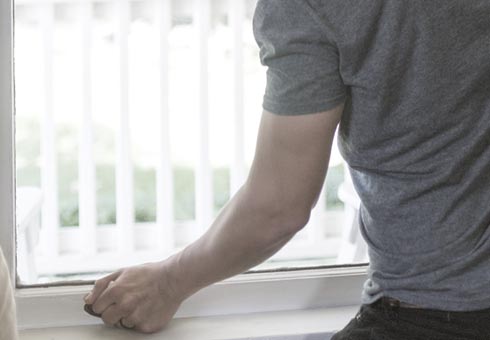Foundation
Repair Problems
what are the most common FOUNDATION problems IN OREGON & WASHINGTON?
The unique combination of heavy rainfall, expansive clay soils, and seismic activity in Oregon and Washington often accelerates foundation deterioration. Poor drainage systems can lead to water pooling around your home, increasing hydrostatic pressure and causing walls to bow or crack. Additionally, seasonal soil expansion and contraction can result in uneven settling, creating gaps around windows and doors. These environmental factors make it essential for homeowners to address foundation repair problems promptly to avoid costly repairs and ensure long-term structural stability.
If you’ve noticed cracks in your basement walls or floor, you may have significant foundation issues. Cracks, leaky walls, and tilting chimneys are some of the early signs of a settling or shifting foundation or an indication of more serious foundation repair problems.
These are some common signs of foundation issues homeowners in Portland, Roseburg, and up through the Seattle & Tacoma areas have asked TerraFirma to diagnose and fix:

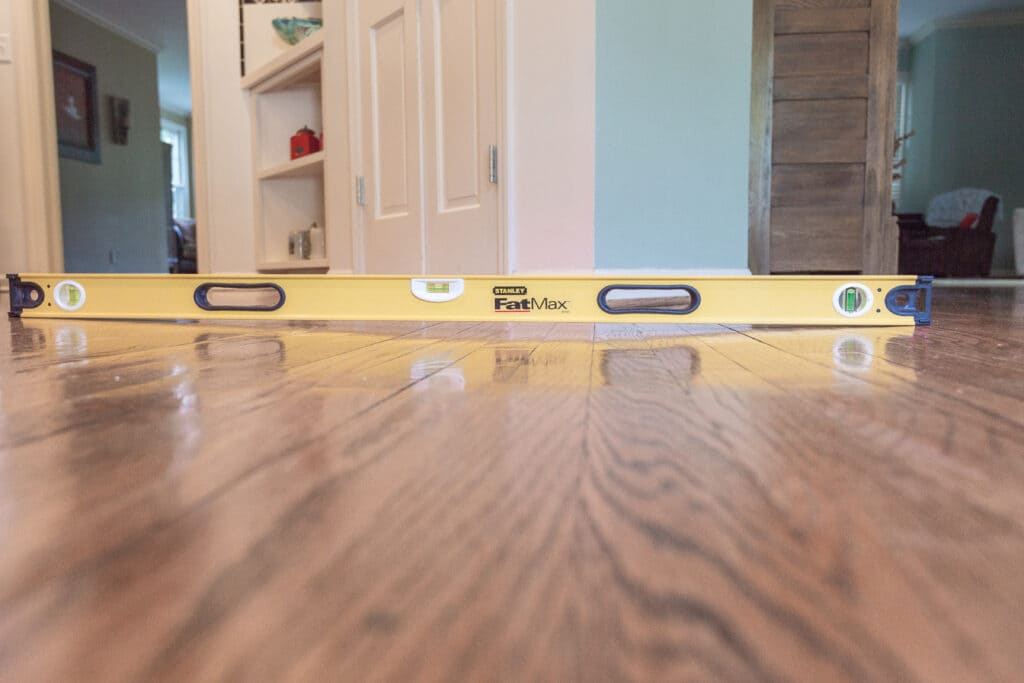
Foundation Settlement
When the soil beneath a building’s foundation compresses or shifts unequally, it causes parts of the foundation to sink or settle more than others. This uneven settling commonly results in noticeable sloping or uneven floors.

Cracks in Foundation and Basement Walls
Common symptoms of this problem include horizontal or stair step cracking along the foundation wall, diagonal cracks in the corners, crumbling walls and inward bulges.
Look for spalling cracks or delamination, which can impact structural integrity.

Jammed Windows and Sticking Doors
If your windows and/or doors are sticking, jamming, or your doors have non-functioning locks, you could have a foundation problem. Other common signs include door openings that aren’t square and diagonal cracks at top corners of window and door openings.
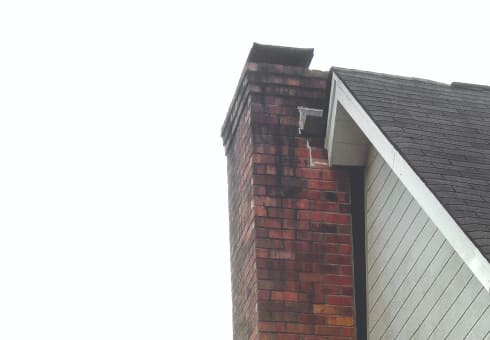
Tilting Chimneys
A leaning or tilting chimney, generally accompanied by cracks where the chimney foundation meets the home foundation. Damage to the roof where flashing meets the chimney, or gaps between the chimney and home walls that have been filled in with mortar, foam, or caulk.
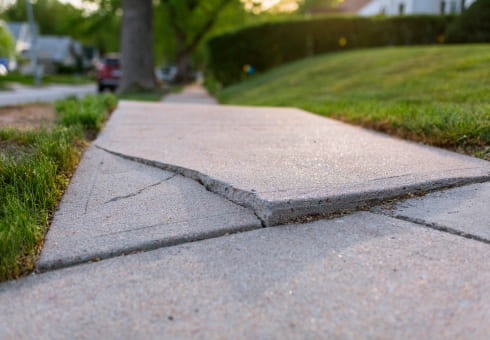
Cracked and Uneven Sidewalks & Driveways
Driveways in our region can often become cracked and sunken. Issues with the soil underneath those concrete driveway slabs are usually accompanied by concrete sidewalk cracks and raised sidewalks.

Stained Basement Walls + Efflorescence
Water stains on concrete walls are caused by mineral deposits from the water drying on the concrete. Efflorescence stains appear as a white or grayish ash on the wall.
Keep an eye on basement walls getting yellow, orange or black stains as these are all symptoms related to moisture getting in.
These are also signs that soil or hydrostatic pressure outside the foundation walls could lead to foundation failure.
Cracks in Basement Floors
Cracks in basement floors are more common than you might expect! If you’re unsure whether it’s a foundation or crawl space issue, note whether the visible problem is centered around the interior or exterior of the structure. Interior cracks in a concrete basement floor often indicate settling or shifting soil beneath the home, while exterior cracks may point to drainage issues or hydrostatic pressure from water buildup. Ignoring these signs of cracks in basement floors can lead to worsening structural damage, increased energy costs, and even potential safety hazards over time. That’s why you should look into repairs as soon as you notice any issues.
Here in Oregon and Washington, homeowners frequently benefit from waterproofing as part of their total foundation or basement floor crack repair. Which of these symptoms do you see around your home?
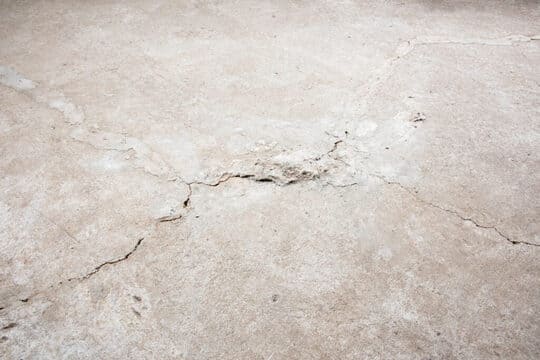
|
Foundation Settlement |
Crawl Space Structural Issue |
Basement Waterproofing Issue |
|
|---|---|---|---|
| Cracks in basement floor |  |
 |
|
| Cracks in foundation & basement walls |  |
 |
|
| Leaking cracks in foundation walls |  |
 |
|
| Sticking or cracked exterior doors and windows |  |
||
| Sticking or cracked interior doors |  |
 |
|
| Sinking, sagging floors |  |
 |
|
| Cracked or sagging floor joist support beams |  |
 |
|
| Floor crack with water seeping up |  |
 |
|
| Standing water in crawl space |  |
||
| Tilting chimney |  |
Why is my foundation Settling or Sinking?

Certain types of soils in the Pacific Northwest absorb water and expand, exerting significant pressure against the foundation, causing it to move creating cracks in the foundation or gaps in your floors.

Consolidating soil causes soil to shrink and compact. This undermines the foundation, making it unable to support the weight of the house evenly. Houses built on hills or with a hot, southern-facing exterior are particularly susceptible and commonly present issues such as sticky doors and windows.

Water can seep in through cracks in the floor or walls of a basement, expanding and putting pressure on the concrete. Water and moisture issues can create water stains, cracks, misaligned floors and doors throughout your home.

Improper drainage, like clogged gutters and downspouts pointed toward your home can cause soil erosion around the foundation allowing water to seep into your basement.

Cheap building materials, poor planning, and shoddy work all spell trouble for a home’s foundation. Inaccurate grading, poorly placed structural reinforcements, and not properly compacted soil can all cause damage.

Trees planted too close to your foundation can pose a slow-growing problem. Roots, seeking water, force themselves between hairline cracks in concrete. The roots of mature trees expand and contract as they soak up water, displacing the earth underneath a home’s foundation.
Basement Walls Crumbling
Your home often sends clear signs when its foundation is failing. Cracked or buckling walls are the most common signs of a crumbling foundation and stress in your home’s support system. Basements in the Pacific Northwest often have cracked and crumbling basement walls and floors.
These issues are often caused by the region’s heavy rainfall, which leads to water pooling around the foundation and increasing hydrostatic pressure. Over time, this pressure can cause walls to bow or shift, compromising the structural integrity of your home, which leads to basement walls crumbling. Additionally, poor drainage systems and expansive clay soils can exacerbate these problems, leading to uneven settling and further damage. Ignoring these warning signs can result in costly repairs and even reduce your property’s overall value.
Not all signs of basement walls crumbling are symptoms of serious damage, but these signs are strong signals that it is time for a professional evaluation:
- Leaking from your basement walls
- Spelling and rust-colored cracks indicate corroding rebar
- Efflorescence on concrete or cinder block walls
foundation
Homeowner
REVIEWS
Don’t take our word for it – see what our clients have to say.
From Roseburg to Eugene, Portland to Seattle, our Foundation Repair work speaks for itself
Foundation Repair Homeowner Questions
Are cracks in a basement floor normal?
Cracks in concrete are common. However, cracks are symptoms of potentially larger issues. The size, placement, and direction of cracks in your basement floor or walls can give insghts into the nature of the issue. Schedule your free in-home inspection with TerraFirma to learn more.
When should I worry about cracks in my basement floor?
You should be concerned about foundation cracks if the cracks in your basement floor are wider than 1/8 inch, spread to and up the foundation walls, appear in a circular pattern, are wet or show signs of water intrusion, have mold around them, have a white flaky substance around them
Are foundation repairs covered by homeowner’s insurance?
Insuance policies vary from home to home and company to company. The best action is always to speak with your insurance company to understand what is covered under your specific policy. Generally, home owners insurance will cover repairs if the damage can be tied back to an event e.g. leaky water heater, tree fell on house etc.
Does foundation repair affect/increase home value?
Yes. A damaged foundation can cause significant loss in property value, as well as potentially scaring off interested buyers. Repairing a damaged foundation helps restore the lost value in a home, and can even increase value when the repairs carry a transferable and long term warranty.
How long does foundation repair take?
Scope, size, and type of repair can vary, as will the amount of time a repair can take. However, most repairs can be made within a few days.
